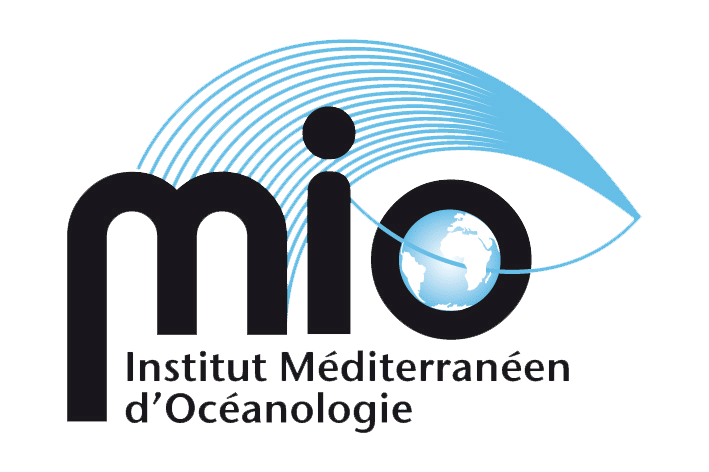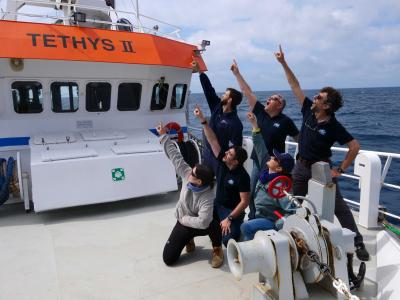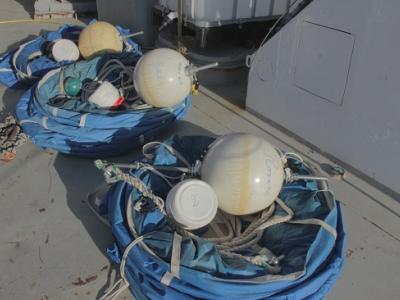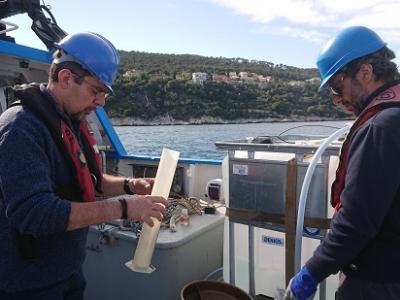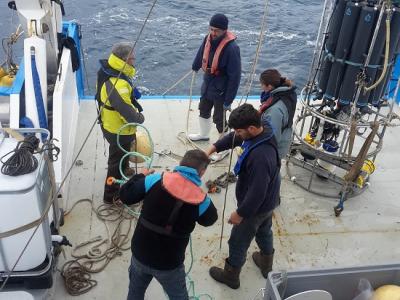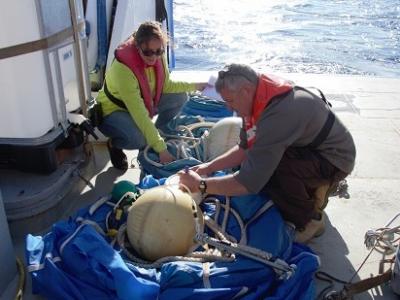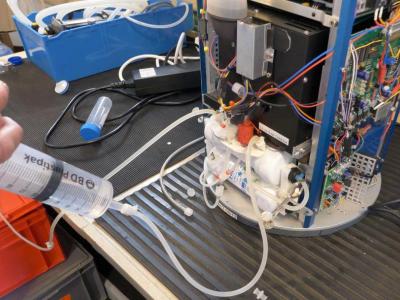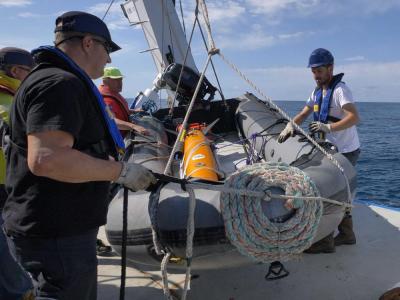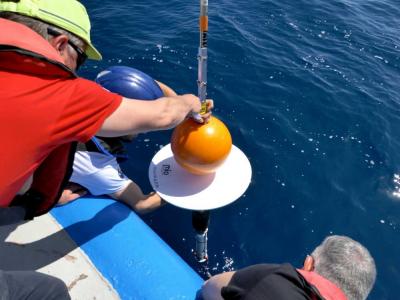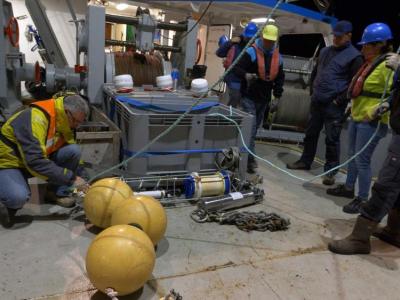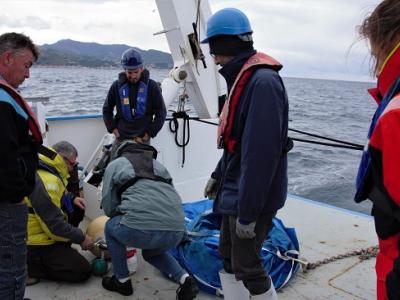 |
Head of mission : Stéphanie Barrillon - MIO
Over the last few decades, modelling and theoretical studies have identified the fine scales of the ocean (small eddies, current filaments of tens of kilometres) as a dynamic regime with major consequences for plankton ecosystems. Modellers and theorists also stress the need for in situ measurements to confirm their predictions.
However, this represents a major challenge due to the ephemeral nature of fine-scale structures. In addition, to study the physical-biological coupling at the microscopic scale, it is essential to carry out high-frequency biological measurements, which requires new methodologies.
The campaign FUMSECK (Facilities for Updating the Mediterranean Submesoscale-Ecosystem Coupling Knowledge) is a week-long technology campaign from 30/04/2019 to 07/05/2019in the Mediterranean in the Gulf of Genoa, aboard the M/O Téthys II. Its mission is to carry out technological tests, at various levels, of the instruments used to study fine-scale processes and dynamics (from 0.1 to 100 km, with a lifetime of a few days to a few weeks).
The first category of tests involves studying the behaviour of the probes towed by the MVP (Moving Vessel Profiler): SSFFF (Single Sensor Free Fall Fish) and MSFFFII (Multi Sensor Free Fall Fish). In particular, we want to study the rotational behaviour of the big fish during the descent and ascent of the instruments, the different connections between the instrument and the tractor cable, between the platform and the depth sounder on the boat, and between the platform and the PC used to process the data, and thus carry out data acquisition tests throughout the chain.
Secondly, we want to experiment with the release of a sample of coloured biodegradable micro-particles in order to study their dispersion and detectability by cytometry. This study will include a test of the water pumping system used for cytometry.
Finally, the last category concerns the exploration of various methods for measuring the vertical component of current velocities, using different ADCPs (shell, L-ADCP on the surface or in profile, FF-ADCP (Free Fall ADCP) in free fall), a prototype vertical velocity profiler VVP (Vertical Velocities Profiler), and a glider.
This work is part of the BioSWOT project supported by the CNES (PI F.d'Ovidio, LOCEAN-IPSL, co-PIs A.M.Doglioli and G.Grégori, MIO).
The aim of this project is to pave the way for the scientific exploitation of the observations made by the future satellite. SWOT (Surface Water and Ocean Topography) beyond physical oceanography, focusing in particular on current biophysical issues.
As well as ensuring that the SWOT data can be exploited to the full by a large interdisciplinary community from the start of its mission in 2022, this preparatory activity is essential for developing interdisciplinary experiments in situ during the SWOT mission.
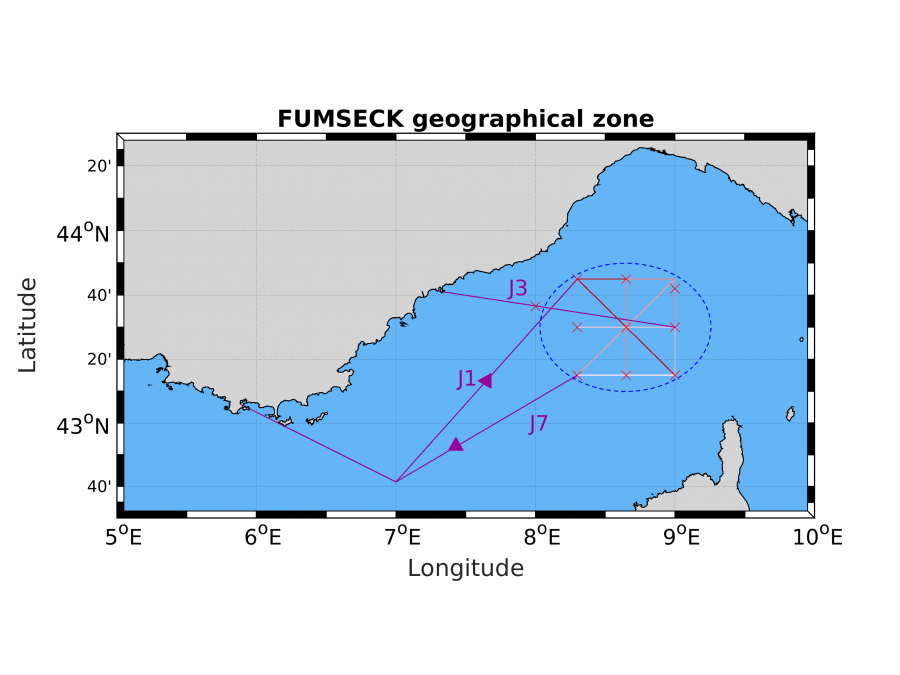 |
Figure 1: Geographical area and stations of the FUMSECK campaign. Example of a trajectory in the presence of an eddy. |
MVP towed profiler
The MVP towed profiler was used during the FUMSECK cruise (April-May 2019) on board the R/V Téthys II, in the Ligurian Sea, to study small-scale physical structures.
